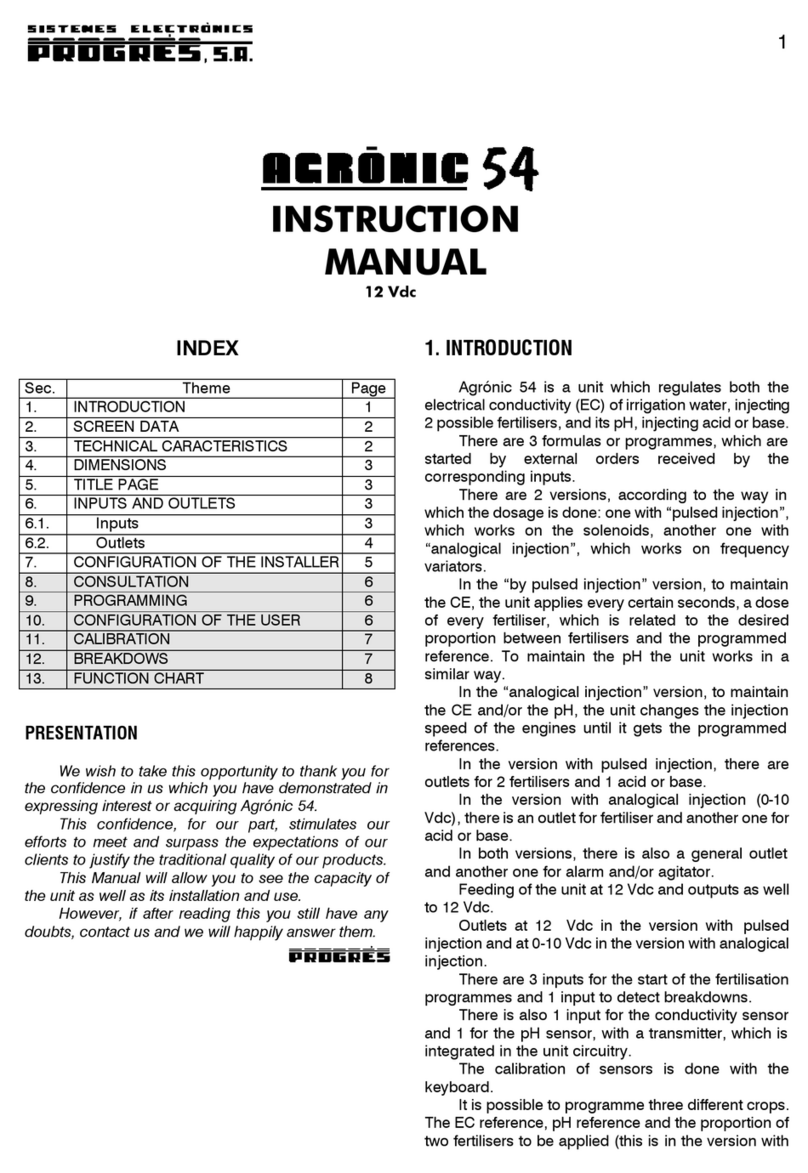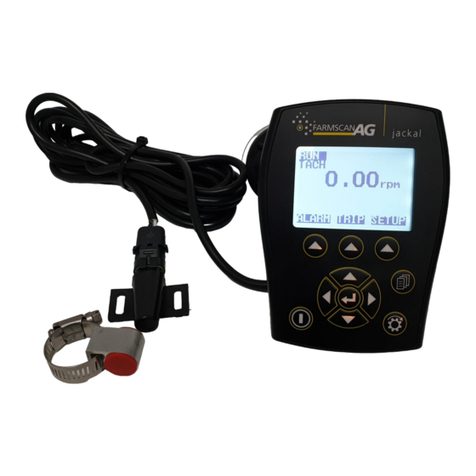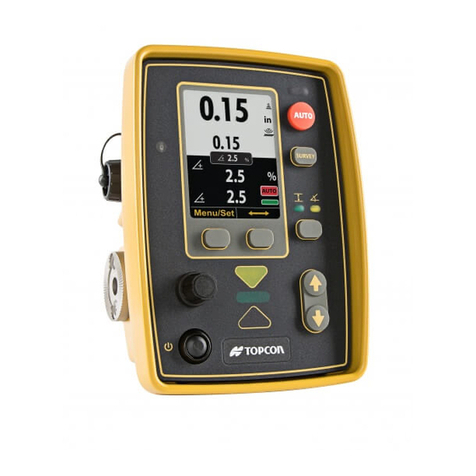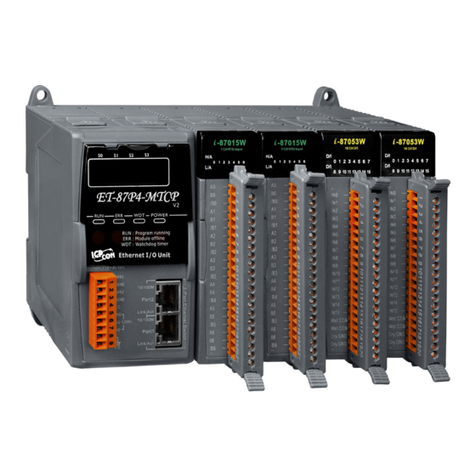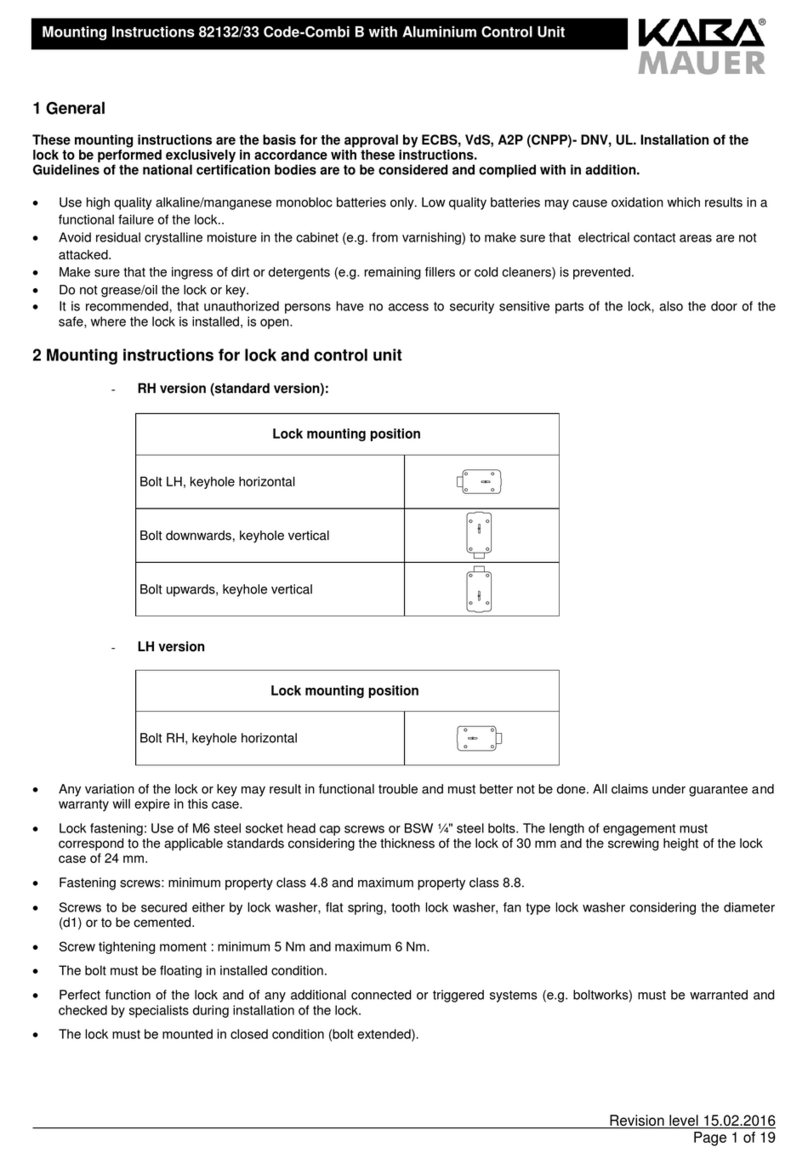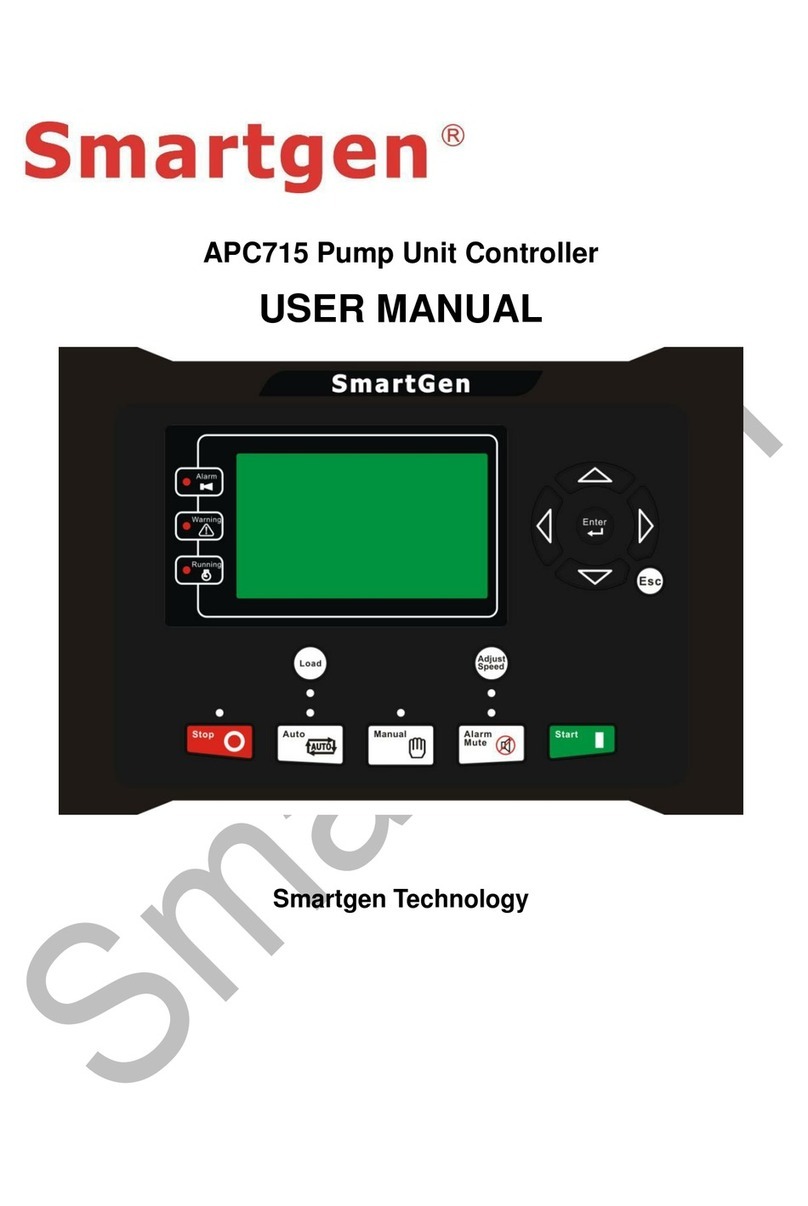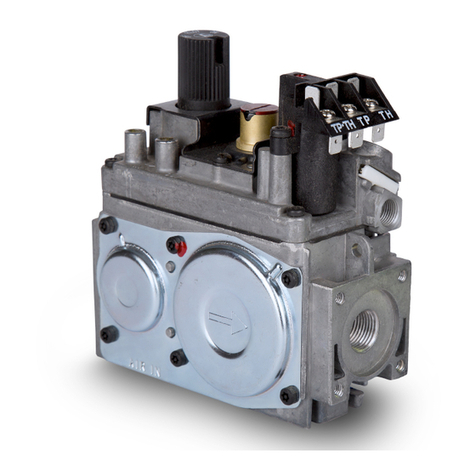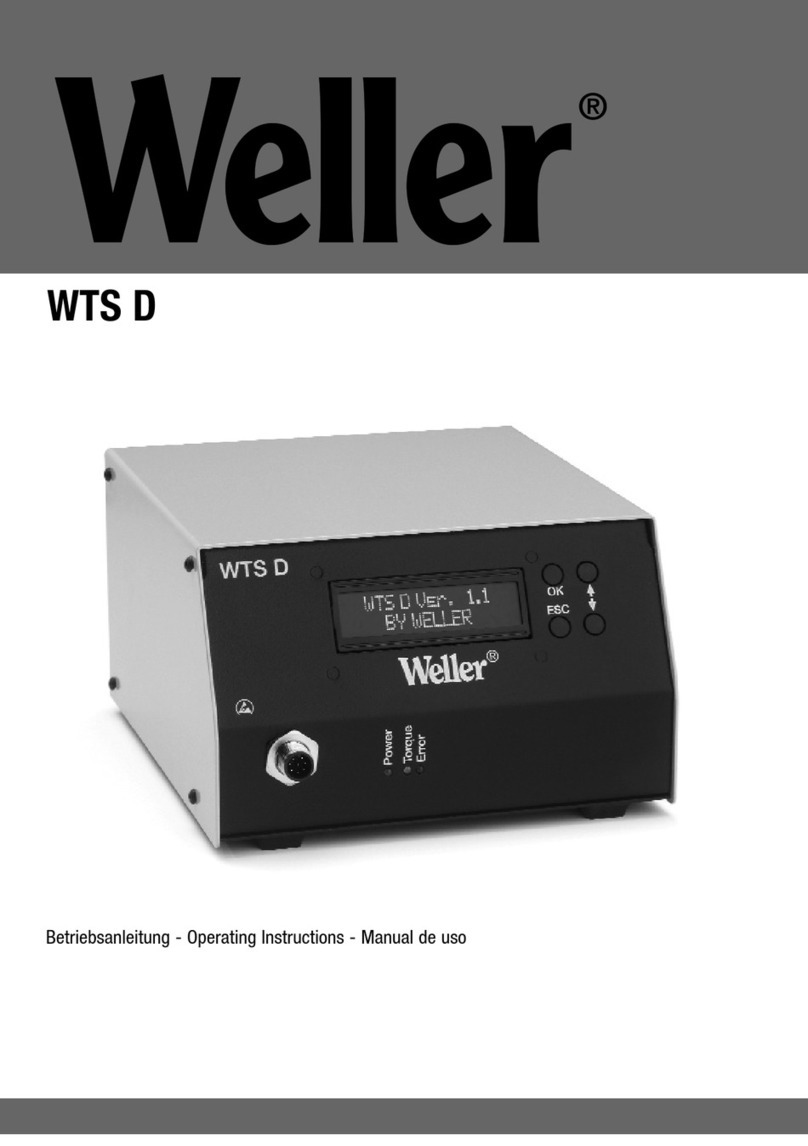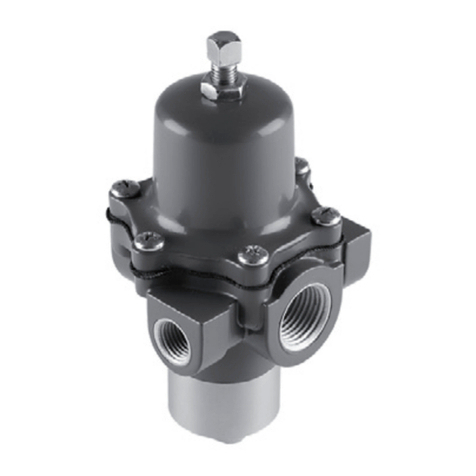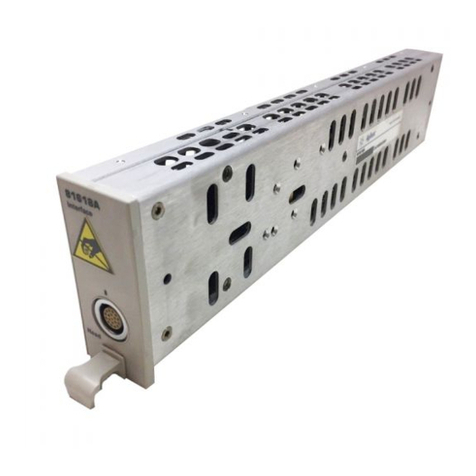Sistemes Electrònics Progrés s.a. AGRONIC 4000 User manual

1
INSTRUCTION
MANUAL
VERSION 3
INDEX
Section Theme Page
1. INDEX/PRESENTATION 1
2. BASIC FUNCTIONAL DESCRIPTION 2
Sections for the installer
3. DIMENSIONS 6
4. INSTALLATION 6
4.1. Placing the unit 6
4.2. Connection placing 7
4.3. Connection of units at 220 Vac 8
4.4. Connection of units at 12 Vdc 10
4.5. Connection of units at double voltage 12
4.6. Earth terminal connection 14
4.7. USB and RS485 connection links 14
4.8. Extensions 14
4.9. Maintenance 14
4.10. Codification of inputs and outputs 15
4.11. Installer’s configuration 18
5. TECHNICAL CHARACTERISTICS 19
6. PARAMETERS 20
6.1. Fertilization parameters 20
6.2. Filter cleaning parameters 22
6.3. General outputs parameters 22
6.4. Sensor parameters 25
6.5. Flow parameters 27
6.6. Sector parameters 28
6.7. Program parameters 29
6.8. Communication parameters 31
6.9. Various parameters 31
Sections for the user
7. PROGRAMS 32
8. READINGS 35
8.1. Total readings 35
8.2. Anomaly readings 36
8.3. History readings 37
8.4. Sensor readings 37
8.5 Communication readings 38
8.6 Software versions 38
9. ERASURE 38
10. MANUAL 38
11. CLOCK 39
12. CONSULTATION 40
12.1. General consultation 40
12.2. Programs consultation 41
Notes 42
GENERAL SUMMARY 43
PRESENTATION
We wish to take this opportunity to thank you for the confidence in us which you have demonstrated in ex-
pressing interest or acquiring the AGRÓNIC 4000.
This confidence, for our part, stimulates our efforts to meet and surpass the expectations of our clients to jus-
tify the traditional quality of our products.
This manual will explain the specification of the equipment as well as its installation and use.
However, if after reading this you still have any doubts, contact us and we will happily answer them.

2
2. BASIC FUNCTIONAL DESCRIPTION
Electronic unit for the control of irrigation, fertiliza-
tion, pH, pumping and filter cleaning, plus malfunction
detection and with the possibility of telemanaging the
data via PC or mobile phone.
Models with 16, 24, 32, 48, 64, 80 and 96 config-
urable outputs, plus 12 digital sensors at the base.
Extensions for the reading of analogical sensors; both
by direct connection to the unit or by external modules
(Agrónic Monocable or Agrónic Radio).
Possibility of programming by time and volume,
both in irrigation and fertilization as in filter cleaning,
with possibility of mixed performance (independent for
each sub-program).
By means of climatic or crop sensors, it can influ-
ence the start conditions or the irrigation and fertilizer
units.
IRRIGATION
It can control up to 99 irrigation sectors, gov-
erned by 35 sequential programs, with 12 sub-
programs in every sequence (total 420), and possibil-
ity of linking programs in order to carry out sequences
of 24, 36, or more sub-programs.
Every sub-program can activate from 1 to 10 irri-
gation sectors simultaneously.
Every program can start its performance at a con-
crete time, when another program finishes, when a
sensor reaches a certain value (°C, soil moisture, etc.),
due to an input when a contact is closed, by mobile
telephone via SMS message. It can also start its per-
formance according to the days of the week, the irriga-
tion frequency (irrigate every day, every 2 days, every
3days, etc.) or irrigate every day with several perform-
ances. The period of the year when the program has to
work can also be indicated. In a start by sensors, an
active period and a margin of time between starts can
be chosen.
Modification of irrigation and fertilization units by
a manual factor or by sensors which will have an influ-
ence depending on their values from the previous
irrigation, such as rain, evapotranspiration, integration
of the solar radiation, etc.
When an irrigation is taking place, a program can
be cancelled temporarily by sensor values such as
wind, temperature, level, etc.
Grouping of programs up to 9 groups so that only
one program of every group can irrigate at the same
time.
Complete control of instantaneous flow of four
possible irrigation meters, with programming of the
expected flow in each sector and tolerance percent-
age both for excess or lack. Each sector can be con-
nected to a digital flow sensor to detect the lack of
irrigation.
FERTILIZATION
Capacity to configure from 0 to 8 fertilizers, in in-
dependent tanks.
Independent pre- and post-irrigation values for
every program.
The time or volume of application of every fertil-
izer can be programmed independently for every sub-
program.
The use of mixers can be configured, with pre-
mixing and intermittent or non-stop mixing.
Fertilizers can be applied in three different ways:
In series: one type of fertilizer after the other, with
just one injector. In proportional fertigation, inde-
pendent proportions for every fertilizer.
In parallel: several fertilizers are applied simulta-
neously, with one injector for every one of them. In
proportional fertilization, independent proportions
for every type of fertilizer and sub-program.
Uniform: Sets the each fertilizer application to be
uniformly distributed between pre and post irriga-
tion. Application in parallel. For Venturis, injectors
or frequency variators.
Each injection track can be cleaned automati-
cally, with water, at the end of the fertilization.
Reading of the instantaneous flow of fertilizers, as
in irrigation.
With the option of “control pH”, it can be con-
trolled by injecting acid or base with a reference value
independent for every sub-program. With values of
alarm by excess or lack in the reading of the pH and in
the electrical conductivity (EC).
It is possible to choose the control of pH at the
pre-irrigation and post-irrigation.
PUMPING
It has from 1 to 4 general irrigation outputs, which
can be assigned to sectors, with independent activa-
tion and deactivation temporizations. The general
number 1, by means of the “pressure regulation op-
tion”, can give a 0-20 or 4-20 mA analog output, in
order to connect it to a frequency variator and main-
tain a pressure in the irrigation pipe line independent
for every sector.
Optional control of a diesel engine or generator,
with outputs for start, stop, contact and pre-heating.
Start and stop control of the electrical pumps.
FLOWS
Every irrigation sector can be assigned to one of
the 4 possible volumetric meters to irrigate in liters or
m3. In the totals, the volume of irrigation and fertilizer
is shared in proportion to the nominal flow assigned to
every sector.
The fertilizer is programmed in liters, deciliters or
centiliters with 8 meters.
FILTER CLEANING
Up to four groups of independent filters, with the
following values:
The number of filters to be used in every group
can be configured. Two cleaning times for every filter
group. Pause time between filters. The cleaning can
be started by the differential pressure and/or by the
time or volume of water circulation. Start or not of the
sectors when cleaning. Assignation of generals and
meters. Control of continuous cleanings.

3
DETERMINING FACTORS
There are 4 determining factors which can affect
every one of the irrigation programs (“programs de-
termining factors” option) and they can run in the fol-
lowing ways:
Start the irrigation by solar energy, humidity, soil
moisture, temperature, etc.
Stop the irrigation by wind, temperature, etc.
Modify the irrigation units by radiation, rain, Eto, ...
Modify the fertilization units by radiation, rain, Eto, ...
These determining factors help adapt fertigation
immediately to climatic variations experienced by
crops.
MANUAL CONTROL
With manual control, you can start, stop and leave
out of service irrigation programs; out of service or gen-
eral Stop; start or stop the filter cleaning; end of alarms
and malfunctions; direct activation of the outputs.
READINGS
It can have the following records which are al-
ways updated:
Sector totals and a general one to show the irri-
gation units in time and volume plus the calculated
flow and the applied units of every fertilizer.
Anomalies which have taken place during a pe-
riod of several weeks, such as a power cut, flow cut,
filter cleaning, fertilizer without control, irrigation or
fertilizer meters, too much fertilizer, proportional fer-
tilization, lack of communication with external mod-
ules, due to sensors of general malfunction, defini-
tive, temporary or conditional stop, intrusion alarm,
pH and EC sensors, error in memory, start and pres-
sure in diesel engine, etc. All of them go with the day
and time when they took place and the most relevant
data in relation to the type of anomaly.
New anomalies: with this record, the anomalies
that have taken place since the last visualization are
displayed.
History of the last days, from 20 to 50, where
the starts of every program, the filter cleanings that
have taken place, the integration of the solar radia-
tion and the room temperature, the rain accumulated
that day and the evapotranspiration are showed. It
will also show, for every sector, the irrigating units
which have been carried out in time and volume, the
average of EC and pH applied and the fertilizer units.
When there is a connection to a PC, the average of
the readings of every 10 minutes, of every one of the
10 last days will be recorded from the first 14 sen-
sors, and the readings of all the active life of the unit
can be stored.
Sensors: with the instantaneous value of the dif-
ferent sensors connected to extensions, external
modules or MicroIsis connected to the Agrónic 4000.
Working record: stores the day and time of
every working the equipment undertakes, able to
hold more than 70 different records, each able to be
configured as an anomaly that can in turn generate
an alarm or SMS message. The register has a ca-
pacity of several weeks. The A-4000 only displays
anomalies, with the remaining activities being dis-
played on the connected PC.
Communication: the communication status with
External Modules and the PC.
ALARMS
There are three alarm outputs, each one able to
link events or workings.
Alarm sensor for intruder detection.
DIGITAL AND ANALOG INPUTS
It has 12 digital inputs (expandable) to operate
with 48 digital functions as temporary / conditional /
definitive stop, irrigation/ fertilizer impulses meter,
general malfunction, intrusion alarm, rain gauge, start
of irrigation programs, diesel oil pressure gauge or
engine stop.
Up to 40 sensors (analog inputs) can be con-
nected to extensions, external modules or SMS, to do
the instantaneous reading, to condition irrigation /
fertilization of different sectors, and make a record in
history of the first 14 sensors.
VISUALIZATION
Lightened screen of 2 lines of 40 characters, with
internal contrast adjustment. Membrane keyboard with
23 keys and pulsing acoustic warning device. “STOP”
key.
It includes languages Spanish, French, English,
Italian, Portuguese and Catalan.
MANAGEMENT THROUGH A PC
Agrónic PC is a software for Windows which lets
you manage the controllers Agrónic 4000, 2500, Bit
and 2000 from a PC, in a comfortable and easy way.
This software makes use of all the advantages of-
fered by the Windows environment in order to enter
parameters and programs intuitively, to modify these,
work in real time, as well as to consult anomalies,
totals, working record and what the Agrónic 4000 is
doing at any given moment.
The software can communicate with one or more
Agrónic. This way, irrigation that is taking place at any
moment can be controlled from the office or from
home and the programming can be changed or any
necessary operation carried out. In GPRS, the com-
munication is continuous and simultaneous with sev-
eral Agrónics. Each Agrónic manages the communica-
tion to three different Agrónic PC programs, for exam-
ple owner, farm manager and installer.
The main characteristics of the software Agrónic
PC are:
Connecting multiple controllers to a single pro-
gram by cable (USB, RS232, RS485 or Ethernet), by
telephone (modem, GSM, GPRS), or by radio (radio
modem, Wi-Fi or Wimax).
All the operations which can be made from the
Agrónic are carried out from the software.

4
Consultations of operations carried out by the
Agronics in 2 different ways, being able to pass from
one to the other by asimple movement of the mouse:
- By units: with different screens. It is a replica of
the consultation that is in the controller, but with
the commodity that provides the displays on a
computer screen.
- By synoptics: implementing planes or photo-
graphs of the farms, parcels or parts of the instal-
lation, and illuminated indicators. With all this, it
allows to see in a clear and fast way the actions
that are carried out by the controller, for example
illuminating the parcels on irrigation, marking
what engines, fertilizers or filters are acting and
showing the flow, pressure, soil humidity, etc.
Programming system on one single screen, on
which a name can be put to each one of the pro-
grams.
Records of all the operations that the Agrónic
carries out, saving them in the text files.
Possibility to save in text files the configuration,
programming, totals and records which can be dealt
with from other programs (spreadsheets, data
bases, etc.).
SMS MESSAGES
With a GSM/GPRS modem connection, "SMS
messages" displaying alarms and events can be sent
to two mobile phones, and one of them can be sent
two reports per day related to the irrigation taken
place. It can also receive orders such as start or stop a
program, set at “Stop”, modify the manual factor of a
program, give the value of a virtual sensor such as the
evapotranspiration, etc.
Once a program has been started up or shut
down, an SMS can be sent to other equipment (A-
4000/A-2500/A-2000/...) to synchronize actions among
them. The text message is prepared by the user.
There is maximum number of 6 for these types of mes-
sages.
EXTERNAL MODULES
Capacity to connect with external modules of dif-
ferent types:
Agrónic Radio 868 and 868-16: up to 64 modules,
it is possible up to 16 latch solenoid outputs,
and up to 16 digital sensors, and 2 analog sen-
sors for each one of them.
Agrónic Radio 2.4: up to 120 modules, it is possi-
ble up to 16 latch solenoid outputs, and up to
16 digital sensors, and 2 analog sensors for
each one of them.
Agrónic Radio 433: up to 60 modules, it is possi-
ble up to 16 latch solenoid outputs, and up to
16 digital sensors, and 2 analog sensors for
each one of them.
Agrónic Monocable 120: up to 120 modules, it is
possible up to 8 latch solenoid outputs, and up
to 10 digital sensors and 1 analog sensor at
every one.
MicroIsis: up to 4 MicroIsis with 8 analog sensors
every one.
Expansion modules: up to 16 modules with 5 re-
lay outputs, 2 digital inputs and 2 analog sen-
sors every one

5
MODELS AND OPTIONS
Model to “to built-in” a frame or “box” in a wall.
Model with power supply at 230 Vac (115 Vac) or
at 12 Vdc.
Option for latch outputs (pulses) for two or three
wires.
Option double voltage in electric generator.
Option analog inputs and outputs with galvanized
isolation on one or two circuits, each one with 6 4-20
mA sensors and 5 4-20 mA outputs (or pulsed out-
puts by photo-relay).
Option serial port USB.
Option serial port RS232.
Option serial port RS485.
Options of serial port 3 (USB or RS232) and serial
port 4 (RS485) and link.
Option Ethernet port.
Option internal gsm/gprs modem
Option of modem for connection to expansion
modules.
Option diesel engine control.
Option of regulation of the pressure of the irriga-
tion water.
Option pH regulation and reading EC with alarm.
Option determining factors of programs.
Option software Agrónic PC
Option of sending and receiving SMS messages.
Option Agrónic Monocable.
Option Agrónic Radio.
Option MicroIsis.
GUARANTEE
The irrigation controller Agrónic 4000 meets all the
norms set by the CE.
The products created by PROGRÉS enjoy a two-
year warranty against all manufacturing defects.
Compensation for direct or indirect damage cau-
sed by the use of the equipment is excluded from the
warranty.

6
3. DIMENSIONS
4. INSTALLATION
4.1. PLACING THE UNIT
Place the unit at the right position and height.
Avoid direct sun exposure, humidity, dust and vi-
brations.
Avoid proximity to any source of interference
which could affect the correct operation of the unit.
The A-4000 is made up
of just one piece, except the
built-in models with more
than 32 outputs, which go
with a second box.
In the “built-in model”, a
hole is to be done in the fron-
tal part of the wall or desk,
according to the measures in the section DIMEN-
SIONS. It will be held with the screws of the corners,
using the four pieces which are included in the unit.
The wardrobe must have a double isolation with
protection for the operation relationship to the net
power supply circuit.
In the “box” model, the unit is held by the upper
pieces at the corners and by the two holes placed at
the below cover of the connection housing, according
to the measures shown in the section DIMENSIONS.
In the version with “box”, the equipment is pro-
vided in a hermetically sealed (box IP65) with a trans-
parent front cover for the keyboard/display and an
opaque cover for the connection housing.
In order to maintain isolation of the box it is nec-
essary to maintain the covers always closed, as well
as install grommets at the outputs of the cables.

7
4.2. CONNECTION PLACING
In order to carry out the connections in the unit of
the “built-in” model, access the connectors placed at
the back.
In the “box” model, take the below cover off to
access the connectors.
The necessary terminals have to be taken out to
enter the cables (do it with the connection cover on
and screwed, in order to avoid possible malfunctions).
It is advisable to link the cables to the terminals
with connection terminals, which are supplied with the
unit. (The terminals accept cables of up to 2.5 mm2of
section).

8
4.3. CONNECTION OF UNITS AT 220 Vac
The unit has to be installed following the prevail-
ing regulations for electrical installations. The unit will
not be completely protected if it is not used according
to the information given in the manual.
The unit has to be placed in such a way that the
elements which may get interferences, such as the
sensor inputs, the sensor power supply, the links to
the PC and modem, have their cables in the best em-
placement, so that they do not receive interferences
from power elements which might be in their sur-
roundings.
All the connection terminals of the Agrónic 4000
can be switched which allows a fast maintenance.
PROGRÉS also offers a protection box for all the
terminals, in case there is a high risk of electrical
sparks from storms entering the cables.
4.3.1. Power connection
Before connecting the unit, it is necessary to
check its identification label where the characteristics
of the power supply are to be found.
The standard power supply is at 230 Vac, being
possible at 115 Vac. but it is necessary to ask PRO-
GRÉS about this last one.
Connect the phase and the power supply neutral
to the terminals marked as “F” and “N”.
A 6 Amp magneto-thermal switch is to be in-
cluded in the installation. It will be used as a discon-
nection device and it has to be placed near the unit at
an accessible place for the user.
It is recommendable to do this as directly as pos-
sible, avoiding that the same cable supplies other
devices. Use cable of the H05VV-F type, 1 mm2.
The power supply input is protected by a fuse,
marked as General Fuse and a varistor. The varistor
might short-circuit the fuse automatically, on detecting
an overload on the line (lightning, etc.). Replace it with
one of the same characteristics.
For unstable or fluctuating voltages use grid sta-
bilizers.
4.3.2. Digital input connection
The different elements of the installation, such as
pressure gauges, levels, meters, etc. are to be con-
nected to the group of 12 terminals labeled as “Digital
inputs (D)”. This is done by connecting one contact
pole to the corresponding input and the other pole to
the 24 Vac “COMMON”.
Contacts must normally be open and free of volt-
age.
One of the 48 possible functions can be assigned
to everyone of the inputs in the section “Parameters -
Sensors”.
The inputs are optically isolated from the internal
circuitry and depend on the same 24 Vac power sup-
ply of the outputs.
4.3.3. Output connection
All outputs are ready to work at 24 Vac (it is very
important not to supply the unit with voltages above to
30 V).
The unit must have a external transformer with 24
Vac output and double isolation according to the UNE
EN61010 norm. Its input will be connected to the out-
put of the magneto-thermal switch which protects the
Agrónic 4000. The 24 Vac output is connected to the
terminals marked with this voltage, entering a pole of
the output of the transformer into one of the terminals
marked as “COMMON / 24 V N”, and the other pole
into one of the terminals marked as “24 V F”.
Connect the solenoids, relays, etc., between the
output common “COMMON” and the corresponding
output.
Do not exceed the maximum power by output of
1 Amp. and the general of 6.3 Amp. If this happens
insert external relays.
The “output fuse” protects from overloads and
short-circuits; to replace it half turn the cover of the
fuses box and replace it by another one of similar cha-
racteristics.
The “AUX” terminal corresponds to the “PHASE”
of the 24 Vac which goes through the fuse. It will be
useful to connect auxiliary elements of manual com-
mand and extensions of relays above to 32 outputs.
The outputs are isolated from the internal circuitry
by relays and protected by a varistor at everyone of
them, plus a general gas discharger in the lines of 24
Vac.
The number of outputs can vary from 16 to 24,
32, 48, 64, 80 or 96 in the same unit. It is possible to
extend the outputs at a distance, in external modules
“via radio” or “via cable”. The maximum number of
sectors to be controlled by the Agrónic 4000 is 99.

9
Every output can be assigned to an irrigation sec-
tor (one or more electrovalves) or to a general output
(pumps, filters, mixers, etc.). To do so, go to the sec-
tion of “Parameters - Sectors” or “Parameters -
Generals”.
Example of connection :

10
4.4. CONNECTION OF UNITS AT 12 Vdc
The unit has to be installed following the prevail-
ing regulations for electrical installations. The unit will
not be completely protected if it is not used accord-
ing to the information given in the manual.
The unit has to be placed in such a way that the
elements which may get interferences, such as the
sensor inputs, the sensor power supply, the links to
the PC and modem, have their cables in the best
emplacement, so that they do not receive interfer-
ences from power elements which might be in their
surroundings.
All the connection terminals of the Agrónic 4000
can be switched which allows a fast maintenance.
PROGRÉS also offers a protection box for all the
terminals, in case there is a high risk of electrical
sparks from storms entering the cables.
4.4.1. Power connection
Before connecting the unit, it is necessary to
check its identification label where the characteristics
of the power supply are to be found.
The power supply is at 12 Volts of direct current.
Connect the positive and negative poles on the
battery to the positive (+) and negative (-) terminals
marked as “+12 Vdc”.
A 6 Amp magneto-thermal switch is to be in-
cluded in the installation. It will be used as a discon-
nection device and it has to be placed near the unit
at an accessible place for the user.
It is recommendable to do this as directly as
possible, avoiding that the same cable supplies
other devices. Use cable of the H05VV-F type, 1mm2.
The power supply input is protected by a fuse,
marked as General Fuse and a varistor. The varistor
might short-circuit the fuse automatically, on detect-
ing an overload on the line (lightning, etc.). Replace
it with one of the same characteristics.
4.4.2. Digital input connection
The different elements of the installation, such
as pressure gauges, levels, meters, etc. are to be
connected to the group of 12 terminals labeled as
“Digital inputs (D)”. This is done by connecting one
contact pole to the corresponding input and the other
pole to the “NEGATIVE” of battery.
Contacts must normally be open and free of volt-
age.
One of the 48 possible functions can be assigned
to everyone of the inputs in the section “Parameters -
Sensors”.
4.4.3. Output connection
All outputs are ready to work at 12 Vdc (it is very
important not to supply the unit with voltages above to
30 V).
Connect the solenoids, relays, etc., between the
output “COMMON OUTPUTS +” and the correspond-
ing output.
Do not exceed the maximum power by output of 1
Amp. and the general of 6.3 Amp. If this happens insert
external relays.
The “output fuse” protects from overloads and
short-circuits; to replace it half turn the cover of the
fuses box and replace it by another one of similar char-
acteristics.
The “AUX” terminal corresponds to the “Negative”
of the 12 Vdc which goes through the fuse. It will be
useful to connect auxiliary elements of manual com-
mand and extensions of relays above to 32 outputs.
The outputs are isolated from the internal circuitry
by relays and protected by a varistor at everyone of
them, plus a general gas discharger in the lines of 12
Vdc.
The number of outputs can vary from 16 to 24, 32,
48, 64, 80 or 96 in the same unit. It is possible to extend
the outputs at a distance, in external modules “via ra-
dio” or “via cable”. The maximum number of sectors to
be controlled by the Agrónic 4000 is 99.
Every output can be assigned to an irrigation sec-
tor (one or more electrovalves) or to a general output
(pumps, filters, mixers, etc.). To do so, go to the section
of “Parameters - Sectors” or “Parameters - Generals”.

11
Example of connection in conventional unit at 12 Vdc :
Example of connection in unit at 12 Vdc with diesel engine control :

12
4.5. CONNECTION OF UNITS AT DOUBLE
VOLTAGE
The unit has to be installed following the prevail-
ing regulations for electrical installations. The unit will
not be completely protected if it is not used according
to the information given in the manual.
The unit has to be placed in such a way that the
elements which may get interferences, such as the
sensor inputs, the sensor power supply, the links to
the PC and modem, have their cables in the best em-
placement, so that they do not receive interferences
from power elements which might be in their sur-
roundings.
All the connection terminals of the Agrónic 4000
can be switched which allows a fast maintenance.
PROGRÉS also offers a protection box for all the
terminals, in case there is a high risk of electrical
sparks from storms entering the cables.
4.5.1. Power connection
Before connecting the unit, it is necessary to
check its identification label where the characteristics
of the power supply are to be found.
The power supply is at 12 Volts of direct current.
Connect the
positive and nega-
tive poles on the
battery to the posi-
tive (+) and nega-
tive (-) terminals
marked as “+12
Vdc”.
A 6 Amp magneto-thermal switch is to be in-
cluded in the installation. It will be used as a discon-
nection device and it has to be placed near the unit at
an accessible place for the user.
It is recommendable to do this as directly as pos-
sible, avoiding that the same cable supplies other
devices. Use cable of the H05VV-F type, 1mm2.
The power supply input is protected by a fuse,
marked as General Fuse and a varistor. The varistor
might short-circuit the fuse automatically, on detecting
an overload on the line (lightning, etc.). Replace it with
one of the same characteristics.
4.5.2. Digital input connection
The different elements of the installation, such as
pressure gauges, levels, meters, etc. are to be con-
nected to the group of 12 terminals labeled as “Digital
inputs (D)”. This is done by connecting one contact
pole to the corresponding input and the other pole to
the “NEGATIVE -” of battery.
Contacts must normally be open and free of volt-
age.
One of the 48 possible functions can be assigned
to every one of the inputs in the section “Parameters -
Sensors”.
4.5.3. Output connection
In double-voltage equipment, the first four out-
puts operate at 12 Vdc (- negative) and the remainder
at 24 Vac (it is very important not to supply the unit
with voltages above to 30 V).
Connect the solenoids, relays, etc. between the
output common “OUTPUT COMMON +” and their
corresponding output, except for the first four outputs,
whose common will be the battery’s positive pole.
Do not exceed the maximum power by output of
1 Amp. and the general of 6.3 Amp. If this happens
insert external relays.
The “output fuse” protects from overloads and
short-circuits; to replace it half turn the cover of the
fuses box and replace it by another one of similar cha-
racteristics.
Outputs 1 to 4 control the diesel engine and op-
erate at 12 volts. They are grounded by an interior
thermal fuse.
The “AUX” terminal corresponds to the “PHASE”
of the 24 Vac which goes through the fuse. It will be
useful to connect auxiliary elements of manual com-
mand and extensions of relays above to 32 outputs.
The outputs are isolated from the internal circuitry
by relays and protected by a varistor at everyone of
them, plus a general gas discharger.
The number of outputs can vary from 16 to 24,
32, 48, 64, 80 or 96 in the same unit. It is possible to
extend the outputs at a distance, in external modules
“via radio” or “via cable”. The maximum number of
sectors to be controlled by the Agrónic 4000 is 99.
Every output can be assigned to an irrigation sec-
tor (one or more electrovalves) or to a general output
(pumps, filters, mixers, etc.). To do so, go to the sec-
tion of “Parameters - Sectors” or “Parameters - Gen-
erals”.
When a diesel engine is controlled in equipment
outfitted with “double-voltage”, it is necessary to as-
sign outputs for the contact, start-up, stopping, and
pre-heating mechanisms in the first four outputs.

13
Example of connection in unit with “double voltage in outputs” :
Example of connection in unit with “double voltage in outputs” and with diesel engine control :

14
4.6. EARTH TERMINAL CONNECTION
The “built-in” model has a terminal screw to con-
nect the protection earth terminal (in the “box” model
it is not necessary as it has not got a metallic casing).
A pressed terminal will be applied to the cable when
joining it to the screw.
The box terminal marked as is internally con-
nected to the filters and protections.
Both the earth and the box terminals are used to
screen the circuitry, for this reason, it is very important
that the earth line is correctly installed and free of elec-
tric noise. It is also used to protect the unit by direct-
ing all electrical sparks through the internal gas dis-
charger to the earth. These sparks can come in
through the output cables when lightning strikes dur-
ing a storm.
4.7. USB AND RS485 CONNECTION
LINKS
An Agrónic 4000 with USB (or RS232) option will
have a side connector where the power cable may be
linked to a PC and an adapter for connection to mo-
dem.
An Agrónic 4000 with RS485 link will have a side
connector (box model) or on the top (built-in model).
This link is always made with bifilar wire: wires A and
B. The connection shall be made by inserting wire “A”
in terminal “1” of the connector and wire “B” in termi-
nal “2”. To connect different equipment through RS-
485 communication a linear bus must be used, with a
single start and end; it must not be in star topology.
4.8. EXTENSIONS
On installing extensions in the Agrónic 4000, pro-
tecting measures have to be taken in order not to da-
mage the circuits.
It is very important to disconnect any connection
to the mains to avoid electro-shock.
Follow the installation instructions enclosed in the
extension element.
4.9. MAINTENANCE
4.9.1. Fuses
In order to replace the fuses it is necessary, for
precaution, to disconnect the unit from the general
mains, half turn the cover of the fuse holder and insert
one of the same characteristics, as it is indicated at
the label placed next to the fuse holder. Spare fuses
are included in the unit.
The fuse marked as “General fuse” protects the
power supply input. Replace it with one of the same
characteristics as it may damage the unit if this is not
taken into account.
The fuse marked as “Output fuse” protects the
outputs from short-circuits. Replace it with one with
the same characteristics as it may damage the unit if
this is not taken into account.
4.9.2. Cleaning
The frontal part is cleaned with a slightly humid
cloth, disconnecting the unit from the mains previ-
ously.

15
4.10. CODIFICATION OF INPUTS AND OUTPUTS
Both the analog and digital sensor inputs as well as the digital outputs (relays) are coded using an 8-digit
number that indicates its physical location. Following tables are shown to help code them.
4.10.1. Digital sensor inputs
Device Module Sensor
00: Base 0 000 01 to 12
01: Expansion modules 0 001 to 016 01 to 02
07: Agrónic Monocable 120 modules 1 001 to 120 01 to 10
08: Agrónic Radio 868-16 modules 1 001 to 064 01 to 16
09: Agrónic Radio 2.4 modules 1 001 to 120 01 to 16
10: Agrónic Radio 433 modules 1 001 to 060 01 to 16
Examples: 00000008: digital input 8 of the base
08101502: digital input 2 of the Agrónic Radio 868-16, Agrónic Radio module 15 (MAR15)
09102301: digital input 1 of the Agrónic Radio 2.4, Agrónic Radio module 23 (MAR023)
07109007: digital input 7 of the Agrónic Monocable 120, Agrónic Monocable module 90 (MAM90)
4.10.2. Analog sensor inputs
Device Module Sensor
00: Base 0 000 01 to 12
01: Expansion modules 0 001 to 016 01 to 02
04: SMS messages 0 000 01 to 08
05: MicroIsis 0 001 to 004 01 to 08
07: Agrónic Monocable 120 modules 1 001 to 120 01
08: Agrónic Radio 868-16 modules 1 001 to 064 01 to 02
09: Agrónic Radio 2.4 modules 1 001 to 120 01 to 02
10: Agrónic Radio 433 modules 1 001 to 060 01 to 02
Examples: 00000003: analog input 3 of the Base
01001601: analog input 1 of the Expansion module 16 (ME16)
04000003: input of SMS message 3
05000203: analog input 3 of the MicroIsis 2
07101001: analog input 1 of the Agrónic Monocable 120, Monocable module 10 (MAM10)
4.10.3. Digital outputs (relays)
Device Module Output
00: Base 0 000 01 to 96
01: Expansion modules 0 001 to 016 01 to 05
07: Agrónic Monocable 120 modules 1 001 to 120 01 to 08
08: Agrónic Radio 868-16 modules 1 001 to 064 01 to 16
09: Agrónic Radio 2.4 modules 1 001 to 120 01 to 16
10: Agrónic Radio 433 modules 1 001 to 060 01 to 16
Examples: 00000001: output 1 of the Base
01000103: output 3 of the Expansion module 1 (ME1)
09102301: output 1 of the Agrónic Radio 2.4, Agrónic Radio module 23 (MAR023)
07101005: output 5 of the Agrónic Monocable 120, Agrónic Monocable module 10 (MAM10)
4.10.4. Analog outputs
Device Module Output
00: Base 0 000 01 to 10
Example: 00000001: output 1 of the Base

16
4.10.5. Charts to write down of outputs to generals and sectors :
PUMPS ALARMS
Pump 1 Alarm 1
Pump 2 Alarm 2
Pump 3 Alarm 3
Pump 4
FERTILIZERS
Fertilizer general output
Fertilizer 1 Analog output F1
Fertilizer 2 Analog output F2
Fertilizer 3 Analog output F3
Fertilizer 4 Analog output F4
Fertilizer 5 Analog output F5
Fertilizer 6 Analog output F6
Fertilizer 7 Analog output F7
Fertilizer 8 Analog output F8
Fertilizer Cleaning 1 Fertilizer auxiliary 1
Fertilizer Cleaning 2 Fertilizer auxiliary 2
Fertilizer Cleaning 3 Fertilizer auxiliary 3
Fertilizer Cleaning 4 Fertilizer auxiliary 4
Fertilizer Cleaning 5 Fertilizer auxiliary 5
Fertilizer Cleaning 6 Fertilizer auxiliary 6
Fertilizer Cleaning 7 Fertilizer auxiliary 7
Fertilizer Cleaning 8 Fertilizer auxiliary 8
Fertilizer Mixer 1
Fertilizer Mixer 2
Fertilizer Mixer 3
Fertilizer Mixer 4
Fertilizer Mixer 5
Fertilizer Mixer 6
Fertilizer Mixer 7
Fertilizer Mixer 8
FILTERS
Filter outputs G1 From to Filter general output G1
Filter outputs G2 From to Filter general output G2
Filter outputs G3 From to Filter general output G3
Filter outputs G4 From to Filter general output G4
Diesel control option pH/EC control option
Starter output
pH control general output
Stop output
pH analog output
Contact output
Pre-heating output Pressure regulation option
Pressure regulation analog output
Device Module Output
Base : 00 0 000 01 to 96
Expansion modules : 01 0 001 to 016 01 to 05
Agrónic Monocable 120 modules : 07 1 001 to 120 01 to 08
Agrónic Radio 868-16 modules : 08 1 001 to 064 01 to 16
Agrónic Radio 2.4 modules : 09 1 001 to 120 01 to 16
Digital
Outputs
Codification
Summary
Agrónic Radio 433 modules : 10 1 001 to 060 01 to 16

17
SECTOR OUTPUT AUXILIARY
Output Sensor digi.
Flow detector SECTOR OUTPUT AUXILIARY
Output Sensor digi.
Flow detector
1 51
2 52
3 53
4 54
5 55
6 56
7 57
8 58
9 59
10 60
11 61
12 62
13 63
14 64
15 65
16 66
17 67
18 68
19 69
20 70
21 71
22 72
23 73
24 74
25 75
26 76
27 77
28 78
29 79
30 80
31 81
32 82
33 83
34 84
35 85
36 86
37 87
38 88
39 89
40 90
41 91
42 92
43 93
44 94
45 95
46 96
47 97
48 98
49 99
50

18
4.11. INSTALLER’S CONFIGURATION
This programming operation is only done by the
installer the first time the equipment has been started
up. It will only be modified when having to make varia-
tions or extensions to the facilities or equipment.
Upon entering in this section the following menu
is displayed:
Comunica. :1 Events :2 Various :3
Options :4 Language :5 Anal.Out. :6
Erasure :7 Record :8
4.11.1. Communications:
[ check the Communication Options pamphlet ]
4.11.2. Events:
In this section, the events that must set off alarms
are configured, whether these will send off an SMS
when triggered and what type of register will be cre-
ated. For each event, the following questions are as-
ked:
Type: 0-anomaly, 1-working, 2-internal (only can
be read in the installer configuration area).
T1: YES, sends an SMS to telephone 1.
T2: YES, sends an SMS to telephone 2.
A1: YES, activates alarm 1.
A2: YES, activates alarm 2.
A3: YES, activates alarm 3.
In the default settings, alarm 1 is associated with
the general alarm, alarm 2 as the fertilizer alarm and
alarm 3 as the pH adjustment alarm.
4.11.3. Various:
Increase the format of the instantaneous flow
limit for irrigation and fertilizing meters, going
from 650.00 m2o liters per hour to 6500.0.
The minutes for control of error in irrigation or
fertilizer meters; by default there are 10 minutes.
A 0 does not carry out any checks.
When a irrigation program is outside of the ac-
tive schedule or of the active period, and has
pending activations to be completed, it can be
configured if it is to be cancelled.
When a program comes out of its active timeta-
ble, the irrigation in progress may be cancelled.
To be able to keep the pumps on when there is
a conditional stop by digital or analog sensor.
In uniform fertilization, it is necessary when using
the relays of the base to enter the time in sec-
onds in the “Modulation Cycle”. Within this cy-
cle, the proportional amount of fertilizer is ap-
plied. The default setting is 20”, while the mini-
mum is 10”. (If you use the pulsed outputs of the
option “Analog Inputs and Outputs” the modula-
tion cycle will apply when entering “Parameters –
Fertilization”).
Fertilization may be stopped on cleaning the fil-
ters.
In parallel and proportional fertilization, the pul-
ses that occur as the proportion ends may be
counted (useful when the time between pulses is
less than two seconds).
Summer/winter time change: setting to YES au-
tomatically changes the summer and winter
hours.
Time between sensors record: indicates how of-
ten a sample from the sensors is recorded. From
6 to 60 minutes. The default setting is every 10
minutes.
Flow sensor delay: the time in minutes to ensure
the digital sensors assigned to the sectors detect
a lack of flow.
Delay in determining factors 5 and 6, delay in the
activation and deactivation of the determining
factors 5 and 6. From 0 to 999”. By default 30”.
4.11.4. Options:
Activation or deactivation of options once the
equipment is installed, to activate enter the code sup-
plied by PROGRÉS and to deactivate enter an incor-
rect code.
4.11.5. Language:
In this section, the language of the texts dis-
played on the Agrónic 4000 can be changed. The
available languages are: Spanish, English, French,
Italian, Portuguese and Catalan.
4.11.6. Analog outputs:
Pressure regulation.
Pressure reference in SA: YES, through the analog
output of the pressure regulation you will get a cur-
rent proportional to the reference that has been
asked for. It is being used to pass the reference to
another operator. NO, the analog output is being
used to regulate the pressure.
Minimum and maximum: to set up the mA ratio
with pressure for the output. It is only used when
the output is to pass the reference.
For each of the ten 0 to 20 mA analog outputs
available on the Agrónic 4000, the minimum (1%) and
maximum (100%) values are configured.
Resistance value: this indicates the value of the
resistance needed to convert the electrical current
into power, normally set at 200 ohms.
Minimum (1%): value in mA that the output must
provide when set at 1%. The number in parenthesis
indicates this value converted into voltage.
Maximum (100%): value in mA that the output must
provide when set at 100%. The number in paren-
thesis indicates this value converted into voltage.
4.11.7. Erasure:
Carry out a total erasure.
Carry out a erasure of the working record
Carry out a erasure of the sensor record
4.11.8. Record
Displays the events that have been configured as
internal.

19
5. TECHNICAL CHARACTERISTICS
Power supply Units for alternating current Units for direct current
Tension 230 Vac or 115 Vac +5 % -10 % CAT II 12 Vdc +10 % -5 %
Frequency 50-60 Hz = = =
Energy consumption Below to 43 VA Below to 18 W (at rest 1.7 W)
Input 0.800 A, T type, 250 V (slow) 1.5 A, T type, 250 V (slow)
Fuses
Output 6.3 A, F type, 250 V (fast) 6.3 A, F type, 250 V (fast)
Keeping the memory which
can be erased when there is
a power cut
Lithium Battery, at 3 V.
Number 16, extensibles to 24, 32, 48, 64, 80, 96.Digital
Type By relay contact, with potential of 24 Vac (External transformer)
Limits 30 Vac / 30 Vdc, 1 Amp, 50-60 Hz, CAT ll
Number 5 or 10Analog
(option) Type By current of 0/4 to 20 mA
Outputs
All outputs have double isolation in reference to the net input.
Number 12Digital
Type Optolinked, work at 24 Vac
Number 6 or 12
Inputs
Analog
(option) Type 4-20 mA (with galvanic separation)
Temperature 0 °C to 45 °C
Humidity < 85 % Box model Built-in model
Heigh 2000 m
Atmosphere
Pollution Grade 2
Weight
(Kg.)
From 3.2 to 6.3 From 4.0 to 5.0
Memory backup Clock and data Above to 5 years
DECLARATION OF CONFORMITY
It follows the 89/336/CEE guidelines for the Electromagnetic Compatibility and the
73/23/CEE guidelines of Low tension for the fulfillment of the product security. The fulfillment
of the following specifications was demonstrated as indicated in the Official Diary of the Euro-
pean Communities:
Emissions EN 50081-1:94 EN 55022:1994 Type B Radiated and conducted emissions.
Immunity EN 50082-1:97 EN 61000-4-2 (95) Immunity to electrostatic discharges.
EN 61000-4-3 (96) Immunity to the electromagnetic field of radioelectric fre-
quency.
EN 61000-4-4 (95) Immunity to fast transitional in gusts.
EN 61000-4-5 (95) Immunity to crash waves.
EN 61000-4-6 (96) Current injection
EN 61000-4-11 (94) Variations to the power supply.
Harmonics EN 61000-3-2 (95) Current harmonics.
Fluctuations EN 61000-3-3 (95) Tension fluctuations (Flickers).
Low tension guidelines: EN 61010-1 Security requirements of measurement electric units, con-
trol and use in laboratory.
Symbols which may
appear in the product
Protection
earth terminal
Danger, risk of
electroshock
Box ter-
minal
Double
isolation
This symbol indicates that the electrical and electronic equipment should not be disposed of as gen-
eral household waste at its end-of-life. Instead, the product should be handed over to the applicable
collection point for the recycling of electrical and electronic equipment for proper treatment, recovery
and recycling in accordance with your national legislation.

20
6. PARAMETERS
In order to install the unit, it is necessary to enter
in the section of “Parameters” to adapt it to the par-
ticular necessities of each installation. Press “FUN”
(functions) and choose the function by its number (4).
Then press “Enter".
Programs : 1 Readings : 2 Erasure : 3
Parameters: 4 Manual : 5 Clock : 6
There are 9 options to choose in the “Parame-
ters” menu:
PARAMETERS Fertiliz. : 1 Cleaning : 2
Generals : 3 Sensors : 4 Flows : 5
PARAMETERS Sectors : 6 Programs : 7
Communic. : 8 Various : 9
In order to get placed in one of the two screens of
the menu, press the up and down arrow keys. Then
press the number of the option and the “Enter” key.
6.1. FERTILIZATION PARAMETERS
Of the 8 possible fertilizers, the ones which are
going to work have to be configured. It has to be also
defined if the fertilization will be in series [1] (apply
one fertilizer after the other), parallel [2] (apply several
at a time) or uniform [3] (several at a time in efficient
distribution).
Fertilizers number ( 0 – 8 ) : 3
Appl. serial-1 parallel-2 uniform-3 : 1
In series or parallel modes, the continuous or
proportional application of the irrigation units can be
configured.
As shown in the picture above, the continuous
fertilization applies each one of the fertilizers for the
total of the programmed value once its addition starts.
When the series fertilization is programmed the totality
is applied before the next one. They are applied at a
time and in its totality when it is programmed in paral-
lel. They stop when the programmed units in one of
them finish. Look at the explicative drawings.
The proportional fertilization consists in apply-
ing each type of fertilizer not one after the other but in
several activations, with doses which will maintain a
prefixed proportionality in relation to the amount of
water circulating.
Fertilization proportional (Y/N) : Y.
If the proportional modality is chosen, at the se-
ries application format will ask for the proportions for
each one of the fertilizers and at the irrigation pro-
grams, the total quantity of water and fertilizer to be
applied to the crop will be programmed.
Proportion series :
F1 005/012 F2 005/014 F3 005/009 F4 010/002
For example, the proportion “010/002” corre-
sponds to 10 irrigation units per each 2 fertilizer units.
These units can be in time (hours: minutes, minutes’
seconds’’) or in volume (m3, L, dl, cl), in relation to the
units each sub-program has.
At the parallel fertilization modality it does not ask
here for the proportions of the different fertilizers, but it
does for each one of the irrigation programs.
Table of contents
Other Sistemes Electrònics Progrés s.a. Control Unit manuals
Popular Control Unit manuals by other brands
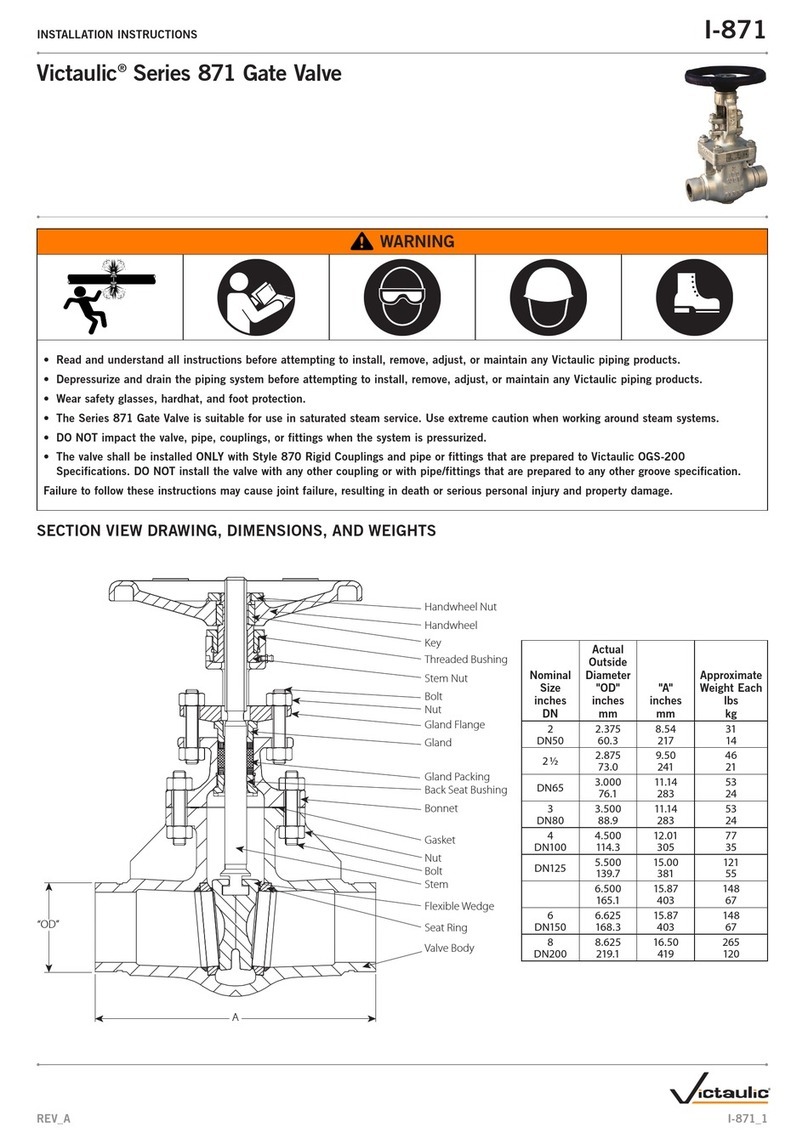
Victaulic
Victaulic 871 Series installation instructions
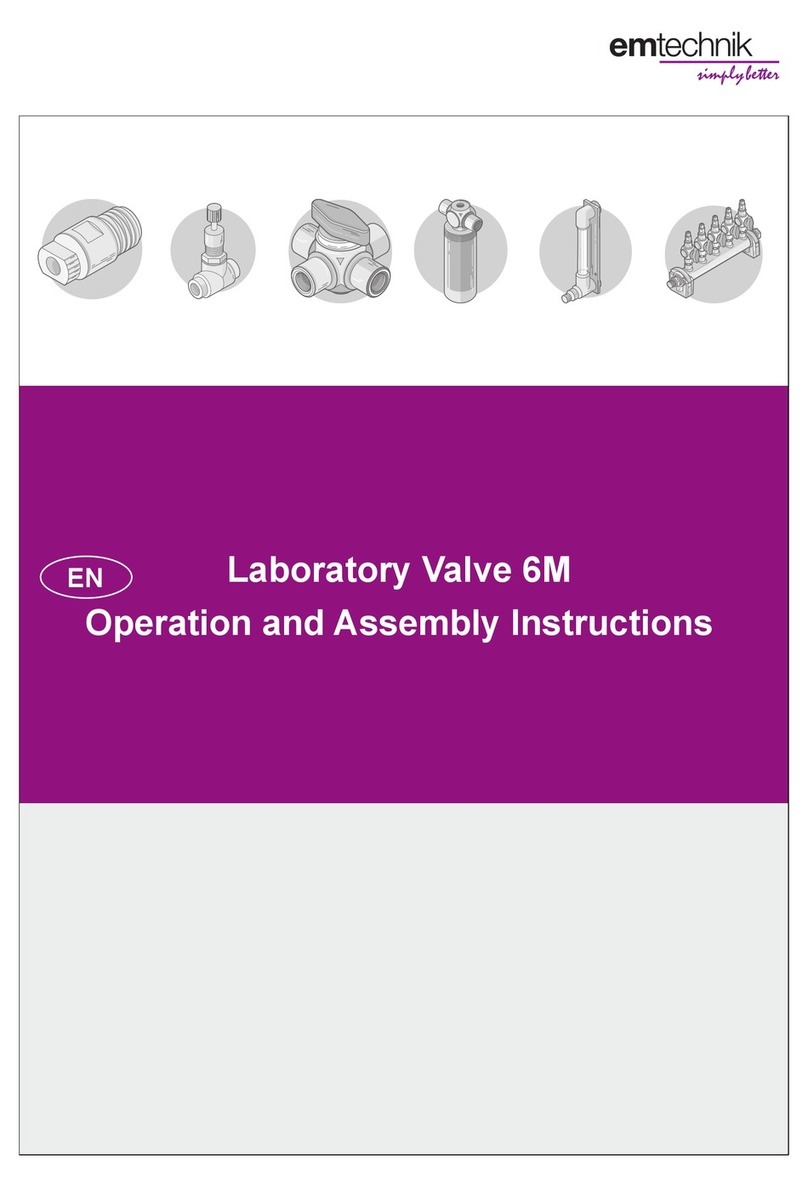
EM-Technik
EM-Technik 6M Operation and assembly instructions
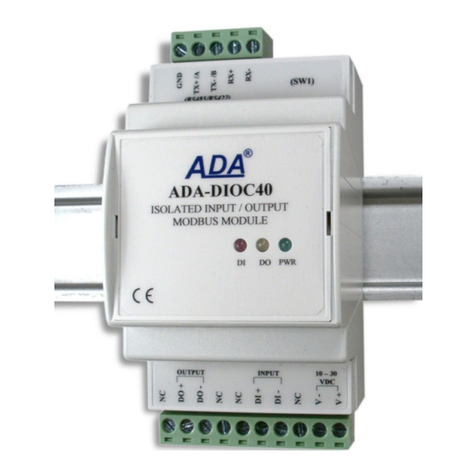
CEL-MAR
CEL-MAR ADA-DIOC40 user manual
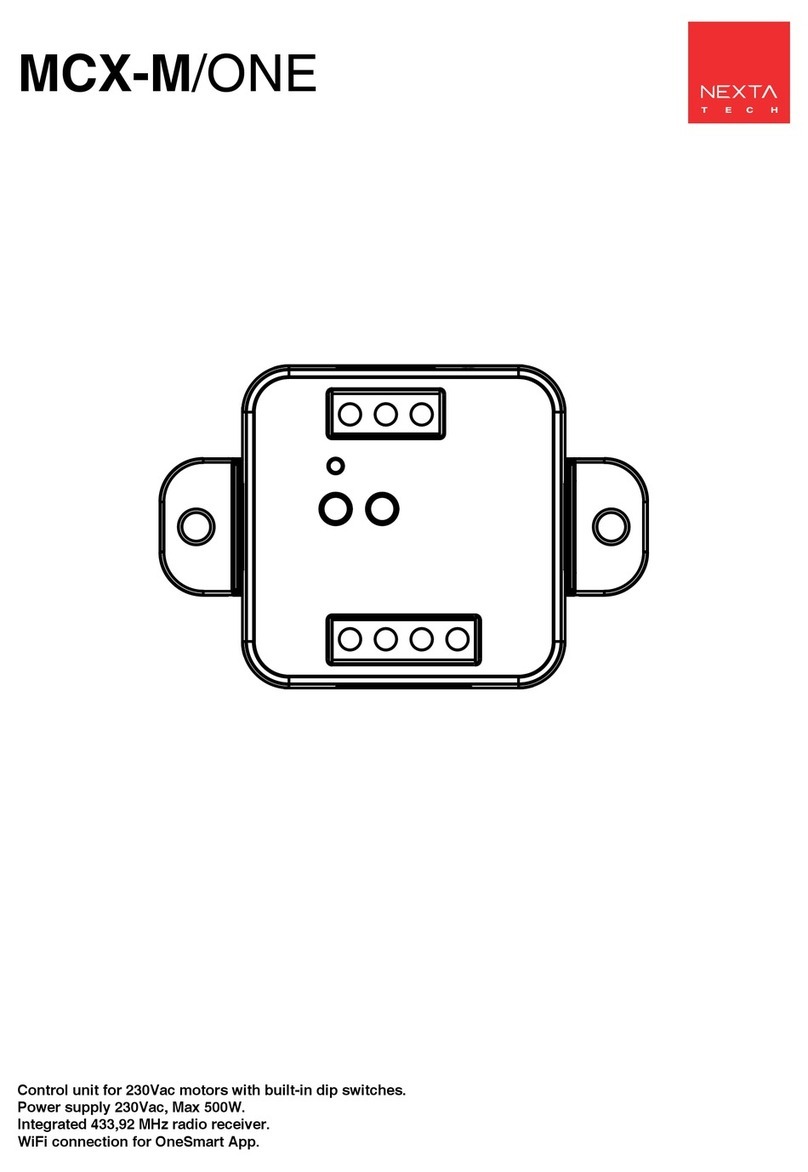
Nexta Tech
Nexta Tech MCX-M/ONE manual

Fulling Motor
Fulling Motor FD542 user manual
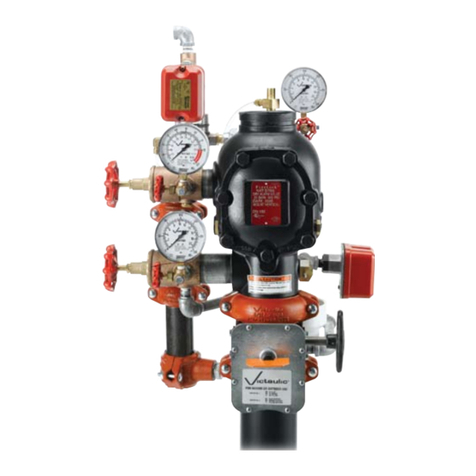
Victaulic
Victaulic FireLock NXT 768 Series Installation, Maintenance, and Testing Manual
